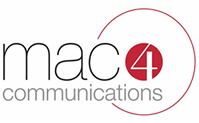
Have you ever seen an organization’s video and wondered what made it so great? Chances are, before they did any production, the video’s creators worked to write a creative, meaningful script. Video is an effective medium to communicate about a product, a service, an achievement, significant news, etc. and the scriptwriting process is the foundation of what makes a good video great.
Before jumping right into a script, you must ask yourself and your team some questions about the nature of the video project:
1.) What is the purpose of the video? Is it an informational video on a new product or concept? Is it a feature of a notable person? Are you sharing a significant achievement within your organization? This information will most likely affect the style of the script and final video, which brings us to the second question.
2.) What is the style and format of the video? Will it be interview style? Will it be a demo? Will it be a mix of video and stills? Will it be an animated video with graphics and text? This will impact the language and tone of the script.
3.) Who will be seeing the video? This is very important because the tone, format and style of the script should be easily understood and relatable to your intended viewers.
4.) What is the intended message, takeaway and action? Do you want your target audience to feel informed? Inspired? Motivated? Is there a call to action that you want your target audience to act on?
All of these questions are important to answer before you begin your script.
When writing the script, here are three tips to best convey your message in a video script:
1.) Keep the script simple and conversational. You will want the voiceover or the text that appears on screen to sound natural and relatable. Avoid overly complex language or jargon. Keep the overall script concise (short videos are more effective than long videos). Include personal stories, anecdotes and examples. These are enduring, relatable and make it easier to understand what you are conveying.
2.) Revise, proofread, and edit thoroughly. Less is more. Avoid the extraneous words that will render the flow of the video cumbersome. You would be surprised what you can convey in less than three words. Also be sure to ask a colleague, co-worker or unbiased editor to read drafts from a creative perspective and a proofreading perspective. Then, listen to what they are saying.
3.) Finally, do a test read. Check the timing. Have a colleague read the script, too. You may find something that initially seemed good on paper but doesn’t sound right when spoken or viewed on screen. This is the time to finely tune and finalize the script.
A script is one of the most important elements to creating an effective video, establishing the tone, the footage, and all other aspects of your video project. These factors will determine whether your video resonates strongly with your target audience, and gets them to take action.
Author: Michael LaBella

